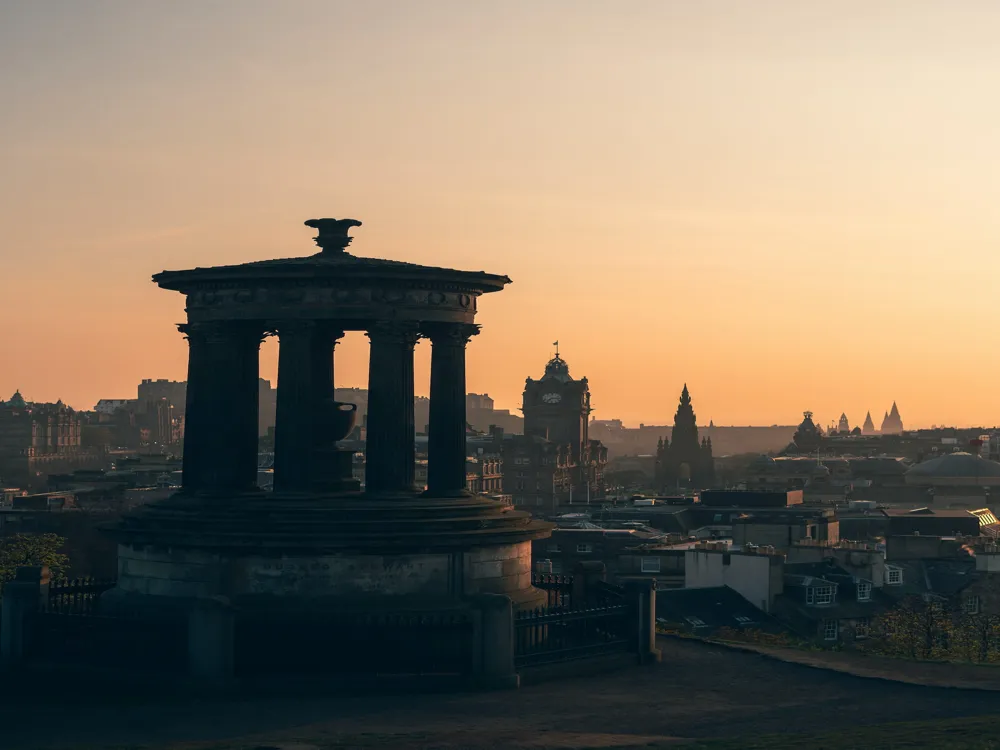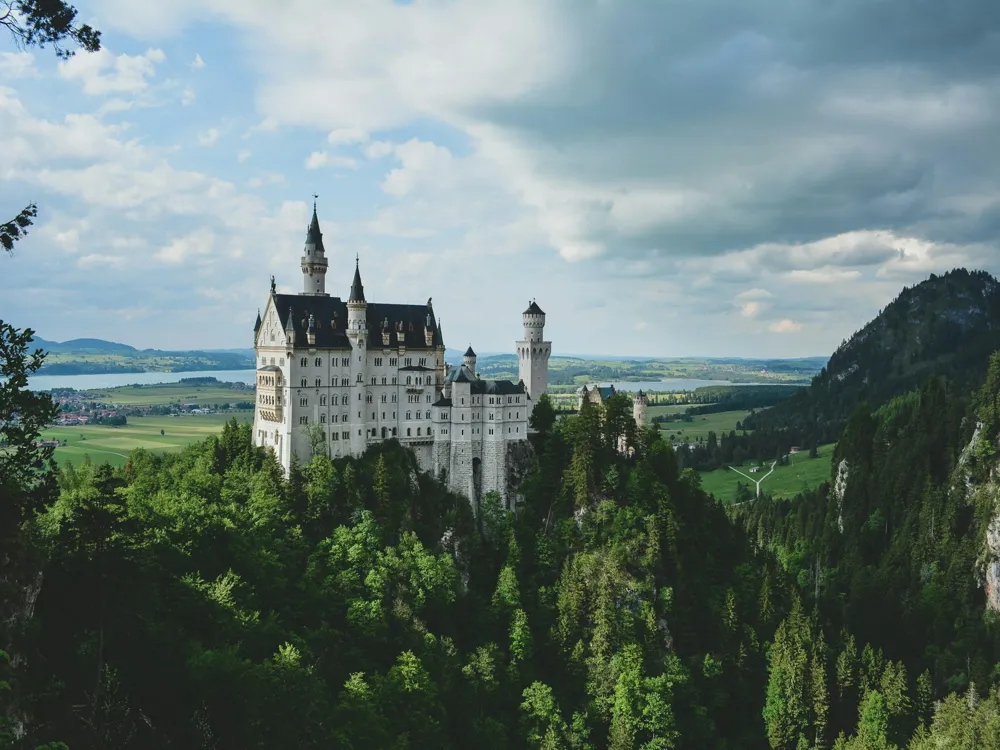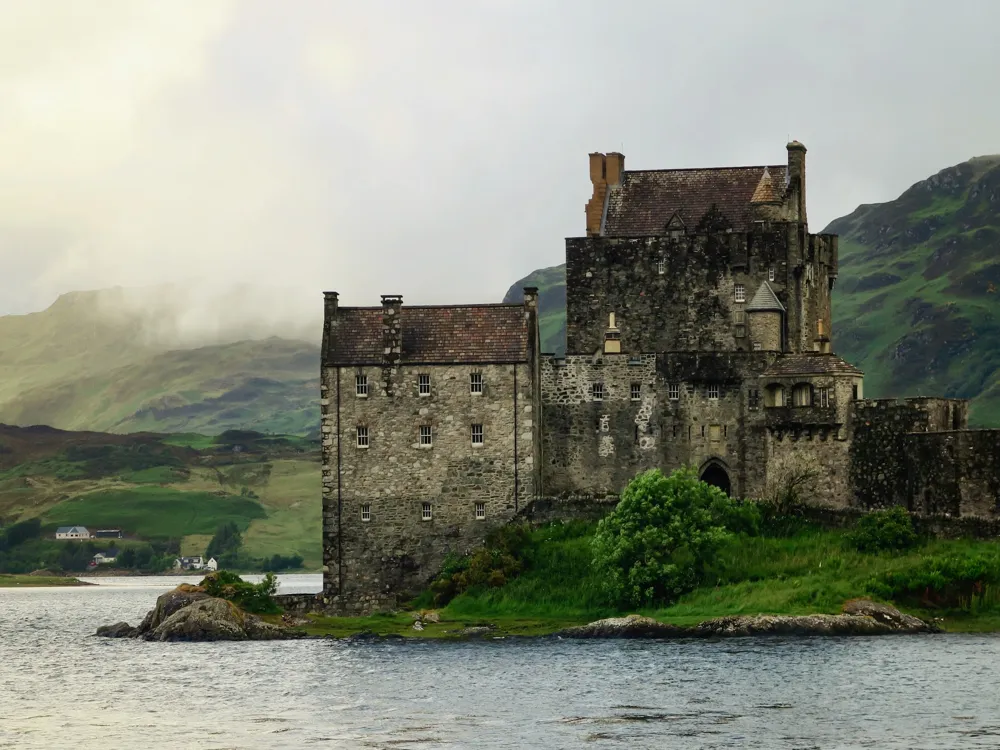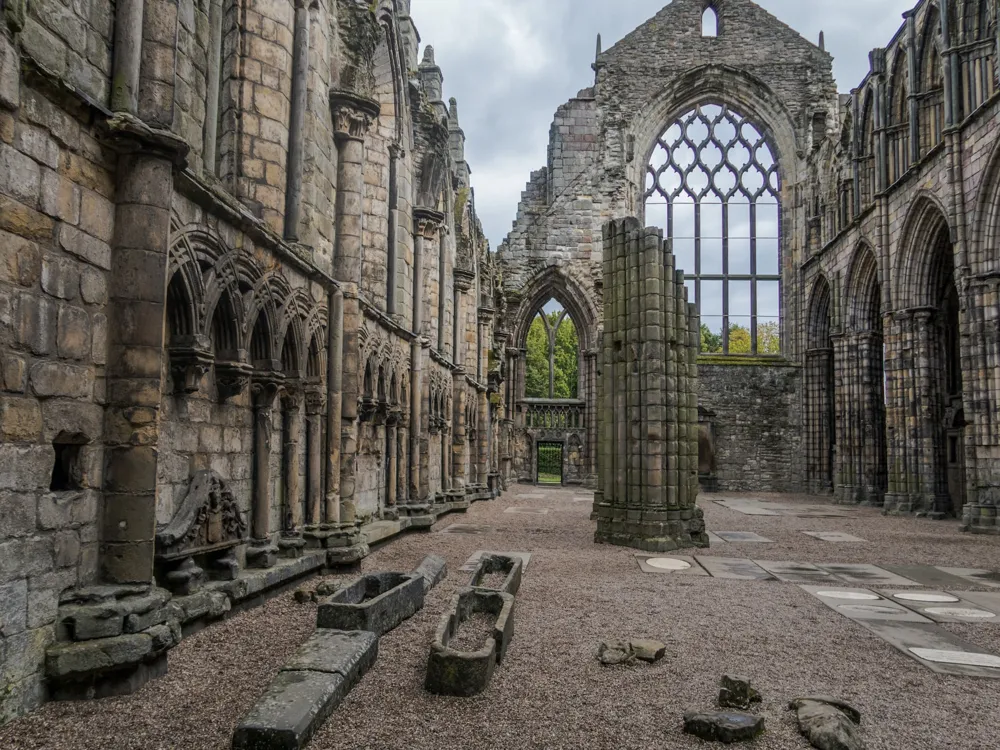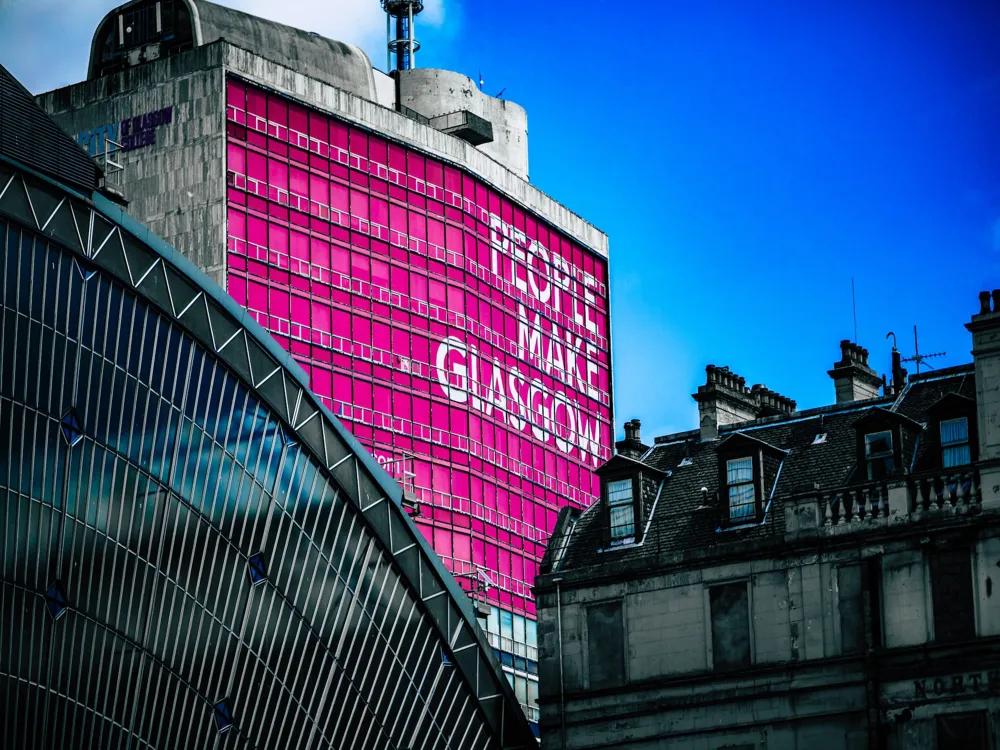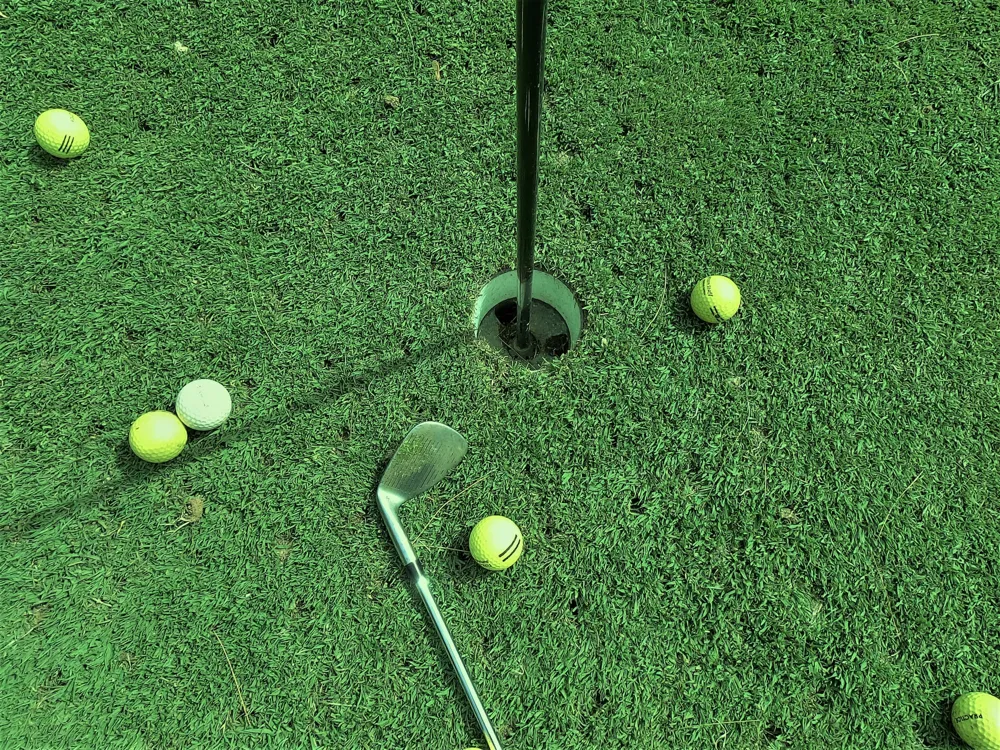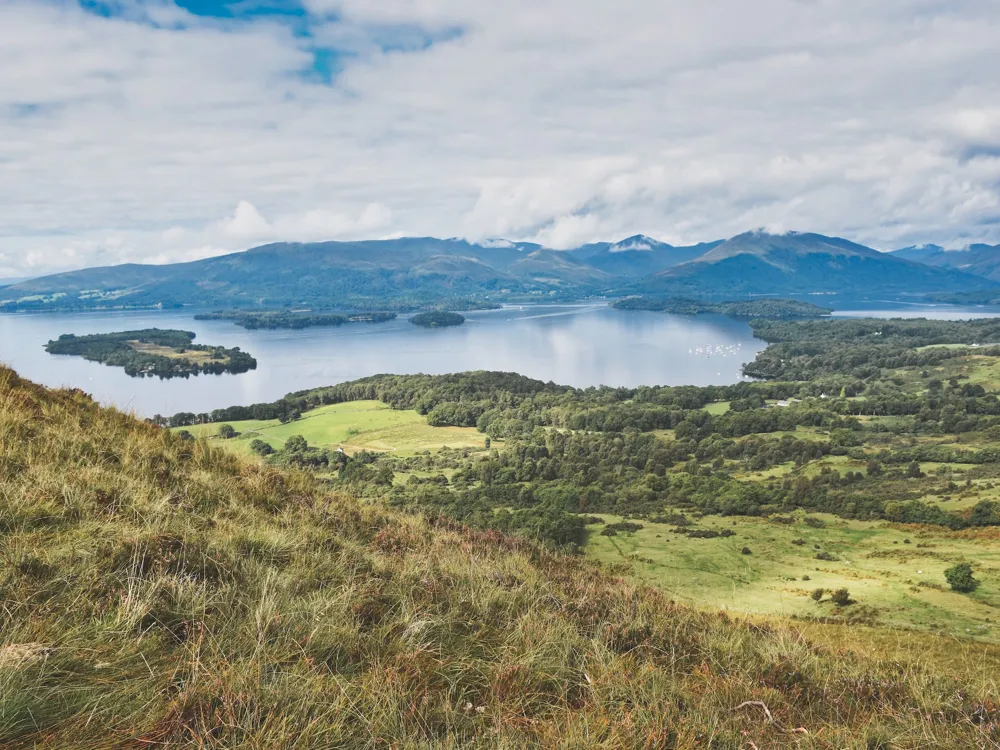Edinburgh, the capital city of Scotland, is a fusion of ancient heritage and modern sophistication. Nestled between the North Sea and rolling hills, this picturesque city boasts a rich history dating back thousands of years. Edinburgh's vibrant cultural scene, world-famous festivals, and stunning architecture attract millions of visitors each year, making it a must-visit destination for travelers worldwide. The city's landscape is dominated by the imposing Edinburgh Castle, perched atop an extinct volcanic rock. This historic fortress is not just a symbol of Scotland's past but also a living representation of its enduring spirit. The Royal Mile, a historic thoroughfare, stretches from the castle gates down to the Palace of Holyroodhouse, the official residence of the British monarch in Scotland, encapsulating centuries of history and culture. Edinburgh's charm extends beyond its historic sites. The city is also known for its vibrant arts scene, hosting the world-renowned Edinburgh International Festival and the Fringe, the largest arts festival in the world. These events transform the city into a global stage for performers and artists, showcasing a diverse array of talents and cultures. Moreover, Edinburgh's natural beauty is unparalleled. The city is surrounded by lush countryside and striking coastlines, offering ample opportunities for outdoor activities and exploration. Arthur's Seat, an ancient volcano, provides panoramic views of the city, and the nearby Pentland Hills are perfect for hiking enthusiasts. Edinburgh's architecture is a tapestry of historical eras, each leaving an indelible mark on the city's skyline. From the medieval tenements of the Old Town to the neoclassical grandeur of the New Town, Edinburgh offers a journey through architectural history. The Old Town, characterized by its narrow, winding streets and tall, densely packed buildings, is a living museum of medieval architecture. The area's Gothic and Renaissance styles are epitomized in buildings like St. Giles' Cathedral and John Knox House. The famous Royal Mile, with its cobblestone streets and hidden closes, tells the stories of Edinburgh's past, from its days as a medieval market town to its turbulent times during the Scottish Reformation. In contrast, the New Town, a masterpiece of urban planning and neoclassical design, offers a stark contrast to the Old Town's medieval chaos. Built in the 18th century, the New Town is characterized by its orderly grid pattern, wide streets, and elegant townhouses. Notable structures include the grand Georgian terraces of Charlotte Square and the iconic neoclassical facades of George Street, reflecting the Enlightenment's influence on architecture and urban design. Edinburgh's architectural journey doesn't end with its historic core. The city has embraced modernity, with contemporary structures like the Scottish Parliament Building and the dynamic, swirling design of the Dynamic Earth museum. These modern additions blend harmoniously with the ancient city, showcasing Edinburgh's ability to evolve while respecting its heritage. Edinburgh is a year-round destination, but the best time to visit is during the summer months of June to August. This period offers pleasant weather and coincides with major festivals like the Edinburgh International Festival and the Fringe. However, if you prefer a quieter visit, spring (April-May) and autumn (September-October) are also great times, with fewer crowds and mild weather. Edinburgh is a walkable city, with many of its attractions located within easy walking distance of each other. For longer distances, the city offers an efficient public transportation system, including buses and trams. Consider purchasing a day pass for unlimited travel. Taxis and ride-sharing services are also readily available. Edinburgh offers a wide range of accommodations, from luxury hotels to budget-friendly hostels. The city center, particularly around the Royal Mile and New Town, is the most convenient location for tourists. Booking in advance is recommended, especially during festival seasons. Don't miss trying traditional Scottish dishes like haggis, neeps, and tatties, as well as fresh seafood. Edinburgh also boasts a thriving culinary scene, with numerous restaurants offering contemporary Scottish and international cuisine. Be sure to also experience the local whiskey culture at one of the city's many bars. Edinburgh is accessible via multiple modes of transportation. The city's international airport, located just outside the city center, offers flights from various global destinations. Train travel is another popular option, with Edinburgh Waverley Station connecting to major cities across the UK. For those preferring to drive, Edinburgh is well-connected by a network of motorways and roads. Additionally, coach services provide an economical alternative for reaching the city.Overview of Edinburgh
Architecture of Edinburgh
Tips When Visiting Edinburgh
Best Time to Visit
Getting Around
Accommodations
Local Cuisine
How To Reach Edinburgh
Holyrood Palace
Edinburgh
₹ 54,993 onwards
View edinburgh Packages
Weather :
Tags : Forts & Palaces
Timings : 1 November - 25 March: 9:30 AM - 4:30 PM,
26 March - 31 October: 9:30 AM - 6:00 PM
Entry Fee : Adult - GBP 12,
Child - GBP 7.20
Planning a Trip? Ask Your Question
Also Refered As:
The Palace of Holyrood house
Edinburgh Travel Packages
View All Packages For Edinburgh
Top Hotel Collections for Edinburgh

Private Pool

Luxury Hotels

5-Star Hotels

Pet Friendly
Top Hotels Near Edinburgh
Other Top Ranking Places In Edinburgh
View All Places To Visit In edinburgh
View edinburgh Packages
Weather :
Tags : Forts & Palaces
Timings : 1 November - 25 March: 9:30 AM - 4:30 PM,
26 March - 31 October: 9:30 AM - 6:00 PM
Entry Fee : Adult - GBP 12,
Child - GBP 7.20
Planning a Trip? Ask Your Question
Also Refered As:
The Palace of Holyrood house
Edinburgh Travel Packages
View All Packages For Edinburgh
Top Hotel Collections for Edinburgh

Private Pool

Luxury Hotels

5-Star Hotels

Pet Friendly







